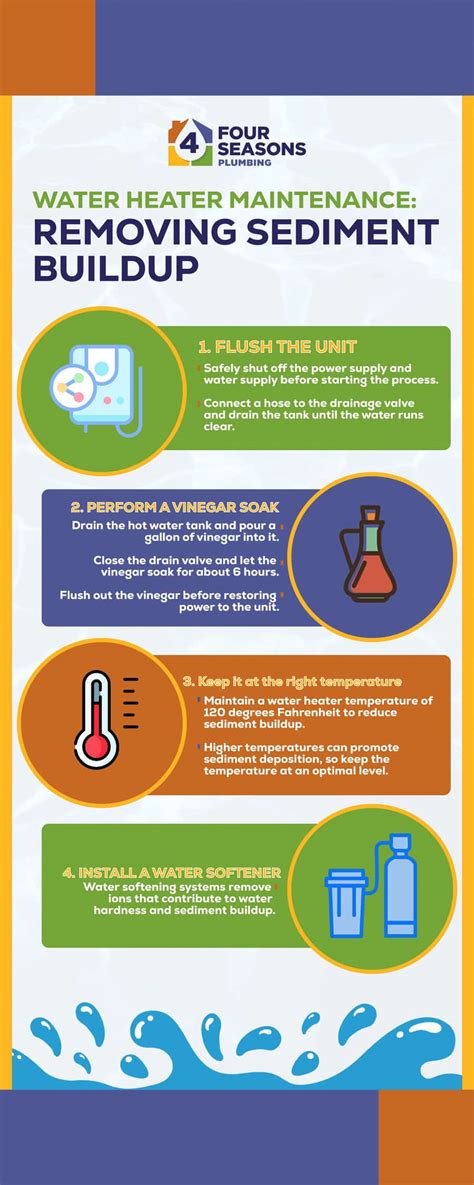Keep Your Water Heater Running Smoothly: Sediment Removal
Water heaters are unsung heroes of the home, providing hot water for showers, dishes, and laundry. But like any hardworking appliance, they need regular maintenance to function efficiently and avoid costly repairs. One of the most crucial maintenance tasks is sediment removal. Over time, mineral deposits build up at the bottom of your tank, reducing efficiency, shortening lifespan, and potentially leading to premature failure. This comprehensive guide explains why sediment removal is essential and how to tackle it effectively.
Why is Sediment Removal Important?
Sediment, composed primarily of minerals like calcium and magnesium from your water supply, settles at the bottom of your water heater tank. This sediment acts as an insulator, preventing the heat from transferring efficiently to the water. This means your water heater works harder, consuming more energy and costing you more money on your utility bills. Furthermore, the buildup can:
- Reduce Water Heater Lifespan: The constant overheating caused by sediment buildup stresses the tank and heating elements, leading to premature wear and tear.
- Cause Noise and Rumbling: Sediment can cause noisy rumbling sounds as the heating element attempts to heat the water through the sediment layer.
- Increase the Risk of Leaks: Excessive sediment can cause corrosion and damage to the tank, potentially leading to leaks and costly repairs or replacements.
- Reduce Hot Water Supply: The sediment layer occupies space in the tank, reducing the available volume of hot water.
How Often Should I Remove Sediment?
The frequency of sediment removal depends on the hardness of your water. If you have hard water (high mineral content), you'll need to flush your water heater more often, possibly every 6-12 months. Areas with softer water might only require flushing every 2-3 years. However, it's always better to err on the side of caution and perform a flush more frequently than less. Regular inspection will help you determine the necessity of a flush.
How to Remove Sediment from Your Water Heater
There are two main methods for removing sediment: flushing and draining. Always turn off the power or gas supply to your water heater before attempting either method.
Method 1: Flushing (Recommended for most water heaters)
This method is less disruptive and ideal for most water heaters. You'll need a garden hose and a bucket.
- Locate the Drain Valve: This is usually located at the bottom of the tank.
- Attach the Hose: Connect one end of the garden hose to the drain valve and the other end to a drain outside.
- Open the Drain Valve: Slowly open the valve to allow the water to drain.
- Monitor the Water: Initially, the water will be cloudy with sediment. Continue draining until the water runs clear.
- Close the Drain Valve: Once the water runs clear, close the drain valve and reconnect the cold water supply.
- Turn the Power/Gas Back On: Once the water heater is refilled, turn the power or gas supply back on.
Method 2: Draining (More Thorough, but More Disruptive)
This method involves completely emptying the water heater tank and requires more time and effort. It's recommended if you notice significant sediment buildup or rumbling noises. This often requires more than just a hose and may involve specialized tools depending on your water heater. It's best to consult your water heater's manual or a professional for this method.
What if I Can't Do it Myself?
If you're uncomfortable performing these tasks yourself, or if you have an unusual water heater setup, it's always best to call a qualified plumber. They have the experience and tools to safely and efficiently remove sediment from your water heater.
How to Prevent Sediment Buildup
While regular flushing is essential, you can also take steps to minimize sediment buildup:
- Water Softener: Installing a water softener is the most effective way to reduce mineral content in your water.
- Sediment Filter: Consider installing a sediment filter on your water supply line to catch minerals before they reach your water heater.
People Also Ask:
How often should I flush my water heater?
The frequency depends on your water hardness. Hard water necessitates flushing every 6-12 months, while softer water may only require flushing every 2-3 years. Regular inspection is key.
Can I flush my water heater myself?
Yes, flushing is a relatively straightforward process that many homeowners can perform themselves. However, always turn off the power/gas supply beforehand and consult your water heater's manual for specific instructions.
What happens if I don't flush my water heater?
Neglecting to flush your water heater leads to reduced efficiency, increased energy costs, premature wear and tear, and potential leaks or damage.
How do I know if my water heater needs flushing?
Signs include reduced hot water, noisy rumbling sounds, and unusually high energy bills. You may also notice sediment in your hot water.
By following these tips and performing regular sediment removal, you can ensure your water heater runs smoothly, efficiently, and for many years to come, saving you money and preventing costly repairs. Remember, preventative maintenance is key to a long and healthy life for your water heater!

